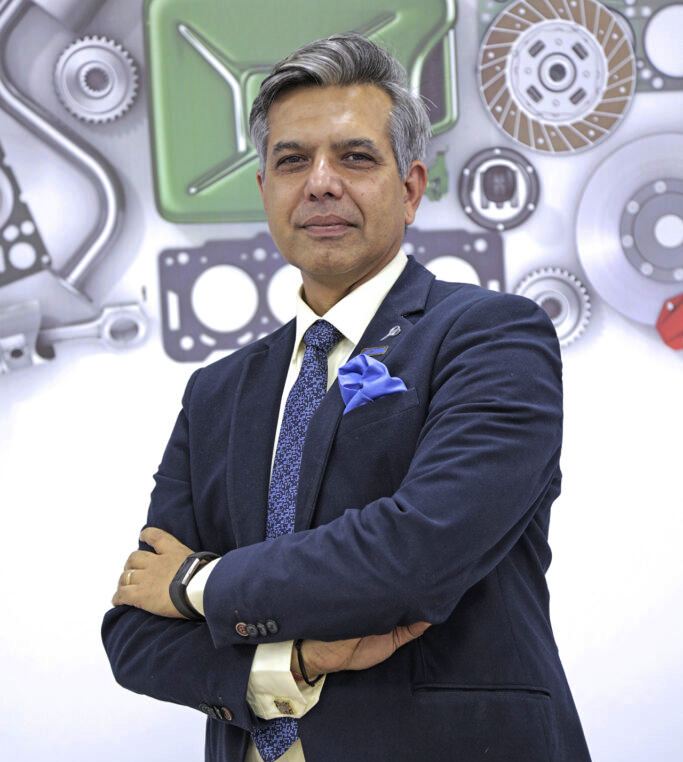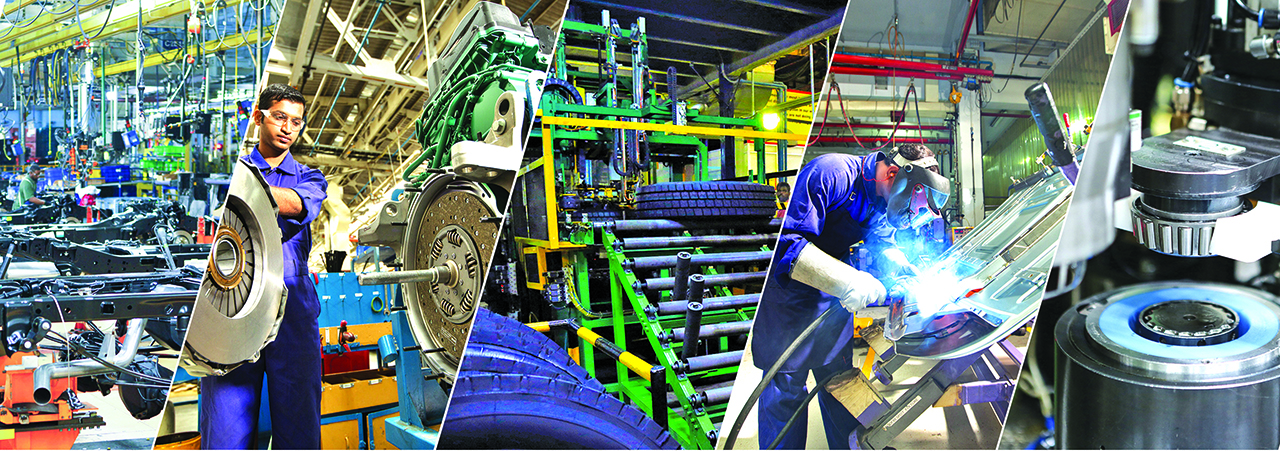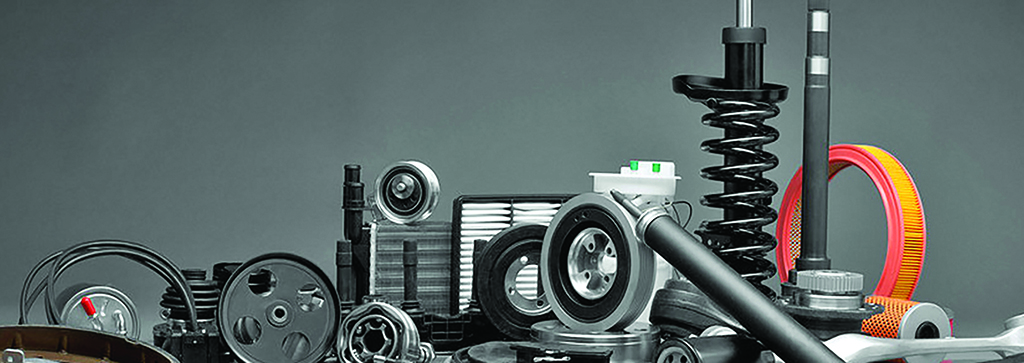
Various factors such as the global COVID-19 pandemic, the subsequent lockdowns, economic slowdown has resulted in two successive years of de-growth for the Indian auto component industry. However, green shoots are emerging, courtesy, the thrust being given to vaccination and a steady increase in vehicle demand, both in India and key global markets. In an exclusive chat with N. Balasubramanian, Vinnie Mehta, Director General, Automotive Component Manufacturers Association (ACMA), the apex body of the Indian auto component industry, gives detailed insights into the impact of the pandemic on the auto component industry, strategies adopted to overcome different challenges, market trends, and rapid emergence of EVs.

We began the interaction by asking Vinnie Mehta to share an update on how the auto component industry is shaping up post the second wave of COVID. Reflecting on 2021 and the challenges he says: “I think we are quite hopeful; there is a lot of enthusiasm in the industry. However, as anyone who is tracking the vehicle numbers should know, there are a few strong headwinds. For example, availability of semiconductors remains a challenge. There is no clarity. For example, at one point in time we were given to understand that when the Delta variant peaked in South East Asia, particularly in Malaysia, which has many chip fabricators, because of challenges on the people’s front, these fabricators had to be shut down for some time. But we understand that now that that they have come back in terms of capacity utilization. So, in some sense there is a little bit of ease on the semiconductor front. While the semiconductors situation may have eased out a bit in Asia, we have to also take into account the fabricators in the US and Europe. What we are given to understand is that this challenge is going to ebb, buts it’s not going to go away. It will therefore be a while, maybe through 2022, when we arrive at a clear solution. We are keeping our fingers crossed.”
He continues: “The other challenges are the prices of raw materials; as you know the steel prices have grown more than 60%. And some of the other commodities, such as copper, aluminium, precious materials rubber, plastics, prices have gone up. That is definitely a problem on the cost front and eventually on the product price front.”
“The third issue is we continue to struggle in logistics, both export and import. There’s a shortage of containers. Even if they are available, the prices have skyrocketed for certain groups. That’s going to be a challenge on the price competitiveness of the industry. But having said that all the three problems are not unique to India, they are global. There is no solution in sight but companies seem to be managing it”, he adds.
Pointing out another trends, he mentions: “The other interesting thing is that the output or shipment from the auto component industry, despite the vehicle numbers coming down, the value of products supplied by the industry is going up. This is to stay relevant to the customer when he approaches the auto component industry and asks assistance to make a system-based approach rather than a discreet approach. That is something good. The value addition from the component industry is increasing and is very evident. Last year, while the vehicle industry numbers came down by 14%, the component sale came down by only 3%.”

Exports Up
Sharing his views on the exports front, Mehta shares, “Of course, we had exports supporting us in a big way. In the first six months of the current fiscal, the export performance has been phenomenal. Although it is coming of a small base. If you recollect, 2 years ago our exports were around $15 billion and last year it was around $13 ½ billion. We have exported more than 60% of what we had exported last year in just the first six months of this financial year. We are keeping our fingers crossed as we drive through the Omicron and the resurgence of the Delta variant in certain parts of the world. But we did not hear too much of a disruption on the business front which is very good. So, exports are one of the brighter spots that we are looking at. It must be also mentioned here that as exports grow, imports also grow in the same vein, which in some sense is also an indicator of enhanced domestic activity.”
Emergence of EVs
“The other very interesting thing from the component industry’s perspective is the emergence of the EV industry. The EV revolution is no longer a question mark. Probably maybe five years ago the din and noise was so much against it, but I think everybody has accepted that it is a reality, and of course the way two- and three-wheelers are going, in some sense the Government wants to go full electric by 2025. We did a poll of the ACMA executive committee members and 60% of them said that they were ready to supply or be a part of the EV supply chain. They also said that they will be ready for it in the next two years’ time. This is something really encouraging in the sense that it shows the confidence and the readiness of our industry. The larger players are ready and already supplying to a large extent,” he states excitedly.
Dwelling further on the topic, Mehta opines: “People feel that they will be missing out on an opportunity which could also mean they will be out of business. Obviously there is an opportunity for the two industries to coexist. There is a little bit of pressure on the industry to invest, because on one side we see engines getting better and better because of the emission control norms, on the other side one sees vehicles that are pure electric, hybrid or run on fuel cells or biofuels. At this juncture there are no notifications but considering a country where the cost of capital is high, it could be a challenge for the industry as to where to focus on.”
Bright Spots
What about the bright spots in the industry? Is there a pent-up demand in the market? While exports may be up, what about the domestic sales? Responding to these questions, the Director General notes: “I think in the auto component industry the portfolio is very well balanced in the sense that we have de-risked ourselves very well. You have supplies to the OEMs, exports and the aftermarket. And at this juncture the export market is doing quite well and so is the aftermarket. In some sense if you prolong the life of the existing vehicle, the wear and tear is more and therefore, the aftermarket continues to do well. Aftermarket therefore, is a bright spot.”
He adds: “One must understand that the margins in the aftermarket are better than supply to the OEMs. And also the aftermarket is undergoing a lot of evolution. Firstly, the vehicle complications are increasing. The Government is mandating on-board diagnostics and related stuff, which would require more sophisticated testing equipment, and more qualified personnel at the service center. I also think that the lockdown has forced some players to move to e-commerce. When we talk about e-commerce there has to be a front end, there are these huge number of apps that have come up which are helping people to access service centers, products, and delivery of products. That’s an interesting thing, because where the traditional organized sector cannot reach, e-commerce is enabling the outreach of products and services, beyond tier-1 cities, if I may say so. Together with the increasing complexities in the vehicle, the consumers’ consumption habits even in the aftermarket is evolving. They would like to go to more organized stores.”

Up the Technology Quotient
When asked about the need for the component industry to step up focus on technology and innovation, Mehta responds: “Our score on the technology front is so poor. We spend just 0.5% of our GDP on R&D. The figures for the component industry are also similar, around 0.5%. The vehicle industry must be spending around 0.7% of their turnover. In a developed country like Germany, the automotive industry spends around 4-5% of their turnover in R&D. I guess we really need to up that quotient to create more value addition, to stay relevant. And as the standards are going up in the country, the world is opening for us as a market and I think we should not lose out on this opportunity. We may be happy with our exports, but you need to remember that the global exports are valued at $1.3 trillion; we are happy with a $15 billion export. The market opportunity is very huge, we are just miniscule. We are just 1.3% of the global trade on the auto component front. It is therefore important that we scale up our capabilities and grab opportunities. In some sense it will help us de-risk from sales in the domestic market. It goes hand in hand. Your portfolios need to be well balanced because you know the domestic market is also a safety net and a huge domestic market like India is a blessing unlike other smaller countries which are dependent only on exports and therefore vulnerable. I guess we should count our blessings. There is a good domestic market, there is a good OEM market, an aftermarket segment and there is the export market awaiting us.”
Optimistic Outlook
Mehta mentions that it would be very difficult to predict the outlook for the auto component industry over the next 3 months left in the financial year. He adds that it would all depend upon how the vehicle sales pan out.
“It is anybody’s guess. Even in the current circumstances we think the component industry would definitely grow by a range of 10-15%, because the vehicle industry has grown and is much better than what it was last year. Keeping in mind the current trends, we can say that the car industry would grow at around 8-10%, maybe the two-wheelers will be a tad negative, and commercial vehicle will be good in the range of 20-30%. Therefore, we think that the component industry should grow in the range of 10-15%. We will be happy if we are proven wrong and it grows beyond 15%. Exports continue to be robust and so is the domestic market. They will also play a key role in improving the bottom lines,” he states.